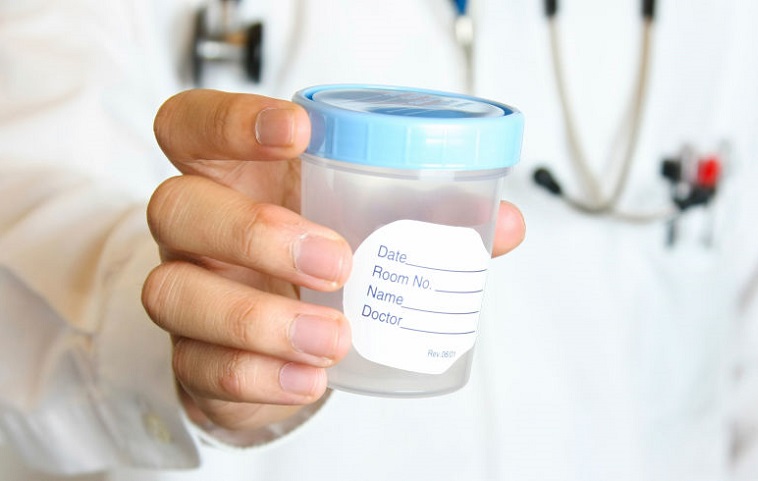Does freezing embryos reduce the chances of pregnancy during IVF?

Does IVF treatment cause early menopause?
3 October 2022
Pay attention to this after IVF
3 October 2022Does freezing embryos reduce the chances of pregnancy during IVF?

Does freezing embryos reduce the chances of pregnancy during IVF?
Embryo freezing is one of the methods used by couples who want to have children in the coming years to store their embryos. In addition to freezing embryos, unfertilized eggs can also be frozen. An embryo is formed when an egg is fertilized and the cell begins to divide.
Embryo freezing has been carried out since the 1980s. Since then, embryos can be stored using embryo freezing, which is especially used by those who want to have children in the future.
At the beginning of the process, the production of eggs that will be fertilized by the woman from whom the eggs are taken is encouraged with the help of hormones and other medicinal supplements. The eggs collected from the ovaries are then fertilized in the laboratory and then frozen and stored.
In IVF treatment, fertilized eggs are placed in the woman’s uterus. However, if more than one embryo is obtained, these embryos can be frozen and stored for future use.
What is an embryo?
In medical terms, the term embryo is used when a cell begins to divide after the fertilization of an egg. This corresponds to approximately the eighth week of pregnancy.
Prior to embryo freezing, freeze-worthy embryos must be obtained. To do this, the eggs collected from the ovaries are brought closer to the sperm and create the necessary environment for fertilization.
Before the egg retrieval process, the woman’s hormonal treatment ensures that the dates on which ovulation will occur are guaranteed. The woman is then given fertility drugs to increase the production of eggs.
In order for the egg collection to be carried out correctly, doctors perform this procedure using ultrasound.
Fertilized eggs with embryos can be used at one time or stored for later use. If embryos are to be used, your doctor will ensure that the embryo is placed in the uterus with IVF.
At the beginning of IVF treatment, if the sperm and egg are combined and the egg is fertilized, the embryologist will observe the development of Embryosfor the next 6 days. The reason for this is related to the selection of a suitable embryo for transfer.
How is the embryo frozen?
The main purpose of freezing embryos is to preserve them for later use. However, the biggest problem with freezing embryos is the water in the cells. If this water inside the cell freezes, the resulting crystals can damage the cell.
In order not to damage the embryo, doctors use a method called cryopreservation. In this process, the water inside the cell is replaced with a substance called a cryoprotectant. After removing most of the water from the cell, doctors freeze Embryosso they are ready for storage. For embryo freezing, two methods can be preferred:
- Slow freezing: In this method, embryos are placed in sealed tubes and the ambient temperature is slowly lowered. This prevents damage to the embryo. However, slow freezing devices are expensive and time consuming to process.
- Glazing (vitrification): In this method, your doctor quickly cools Embryosthat have been replaced with a cryoprotectant in water. Thus, water molecules do not have the opportunity to freeze. Embryosare protected and their chances of surviving the thawing process are high.
After freezing, Embryosare stored in liquid nitrogen.
How long can embryos be stored?
In general, it is believed that embryos can be stored frozen for an arbitrarily long time. Thus, embryos stored at around -160°C can be stored without any damage.
As seen from previous embryo transfers, successful pregnancy can be achieved with embryos stored up to 10 years. However, since this method is not based on very old years, long-term studies of preserved embryos have not yet been conducted.
But, of course, there are certain times when Embryosmust be stored frozen. Since the freezing and storage processes are expensive, each clinic has its own storage times.
Success rate in frozen embryos
Success rates during embryo thawing are generally high, and women who become pregnant with thawed embryos give birth to healthy babies. According to studies, babies born after embryo freezing did not show developmental anomalies. However, more research is needed in the medical world for these results to be reliable.
Side effects of embryo freezing
The side effects or complications that can be caused by embryo freezing usually occur during the egg retrieval process.
Common side effects of egg retrieval are usually mild and temporary. These side effects may be:
• Cramping or bloating
- Bleeding
- Change in vaginal discharge
- Infection
- Ovarian hyperstimulation
Who can freeze embryos?
Embryo freezing can be chosen by people who have the following problems:
- Individuals with genetic disorders that affect fertility.
- People who will receive chemotherapy treatment
- Those who are forced to take drugs that affect fertility
- Those who are considering having a child later in life
Freezing of all fertilized embryos
In this method, the doctor hides all fertilized eggs. It is especially preferred for people at high risk of developing ovarian hyperstimulation syndrome. Although it is a rare syndrome, it is a dangerous condition that can occur in people receiving hormone therapy to increase egg production. To prevent this risk, your doctor may choose to freeze the embryo and perform an embryo transfer when the hormones are over.
Your doctor may also want to use this method to check for genetic defects in your embryo. So he can check the chromosomes in the DNA helix.
The process of transferring embryos with a standard arrangement of chromosomes proceeds more successfully. For this reason, it can also be used as an imaging modality to prevent genetic disorders in future pregnancy situations.
Embryo freezing is generally safe and allows for successful pregnancy and delivery. Among the possible risks of embryo freezing are genetic abnormalities that may occur in the baby. Because embryo freezing does not yet have a long history, its long-term health effects are not fully known.
In addition, pregnancy at a later age can cause complications. However, the main factor here is not whether the embryo is frozen or fresh, but the advanced age of the woman and the problems that arise accordingly.
Also, as we mentioned earlier, fertility treatments can sometimes cause ovarian hyperstimulation. It usually occurs in 2% of treatment cases and is generally not life-threatening.
One disadvantage of embryo freezing may be its cost. However, it is often preferred by people who want to have children later in life, or by people who cannot conceive naturally, as it is an effective method.
Benefits of Embryo Freezing
During IVF treatment, one or two embryos are placed in the uterus of a woman. Although more embryos are obtained, since this can lead to multiple pregnancies, they are not transferred.
Thanks to the freezing of embryos, untransferred eggs are laid for later. That is, if six embryos were obtained in the laboratory, but one or two of them were transferred, the remaining embryos are frozen. If you are unable to conceive the first time, the embryo transfer can be performed again without going through processes such as additional hormonal supplementation and egg collection.
Fresh embryo transfer
In fresh embryo transfer, fertilized eggs, that is, embryos, are placed in the woman’s uterus without freezing some time after the egg retrieval process has taken place. Prior to egg collection, the ovaries are supported with various fertility drugs to produce a sufficient number of high quality eggs. After that, the collected eggs are combined with sperm in the laboratory for fertilization.
When a woman enters the process of ovulation, her estrogen levels rise and progesterone is produced to trigger the maturation of the egg. Timing is also very important when transferring embryos. There must be harmony between the embryo transfer and the endometrium. Extra embryos obtained after fertilization can be saved for later use.
Previously, fresh embryo transfer was considered safer than frozen embryo transfer. However, in recent studies, frozen embryo transfer has been observed to provide a higher success rate than fresh embryo transfer in women with polycystic ovary syndrome.
In addition, the use of frozen embryos is less risky in terms of ovarian hyperstimulation syndrome. Women who get pregnant using frozen embryos may be less likely to have a preterm birth than women who get pregnant using fresh embryos. In addition, prior to embryo freezing, genetic imaging and examination of the embryo is performed.
Both fresh and frozen embryo transfers can lead to pregnancy and live birth. Both methods have their advantages and disadvantages. Therefore, it will be important to talk to your doctor and evaluate your options.
Should frozen embryos be preferred over fresh embryos in IVF treatment?
According to studies of frozen and fresh embryos, the use of frozen or fresh embryos does not have a different effect on pregnancy rates or fetal health. In some studies, frozen embryo transfer has an increasing impact on pregnancy rates. This is because frozen embryos are embryos derived from a woman’s younger eggs.

